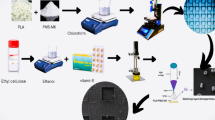Abstract
The present article briefly reviews the status of tissue-engineering research in Korea. Research and development on neo-organs using tissue-engineering technology in Korea started about five years ago. The Polymer Society of Korea and the Biomaterials Society of Korea have been the major forums for scientists and engineers presenting their work on tissue-engineered artificial organs. More than 20 major universities, 2 government research institutes, and several private companies are conducting active research on the development of artificial organs based on tissueengineering technologies. Skin has been the major organ developed in Korea, as in the world. Although a successful, commercially available, tissue-engineering-based skin has not yet been developed several major pharmaceutical companies are interested in research. Using tissue-engineered poly(lactide-co-glycolide) (PLGA) scaffolds, scientists have developed artificial cartilage and conducted in vivo tests. They are planning to mold tissue-engineered scaffolds for other organs.
Similar content being viewed by others
References
Lee HB. Perspectives of tissue engineering in Korea. Proceedings Sixth Kyungpook National University Hospital International Symposium 30, October 14, 1999
Nam YS, Park TG. Macroporous biodegradable polymer scaffolds prepared by gas foaming method. Trans Kor Soc Biomater 1999;4:17
Kim JY, Park JK, Hong SD. Transplantation of cultured keratinocytes in autologous fibrin glue suspension. Trans Kor Soc Biomater 1999;4:60
Chae SY, Bae YH. Effects of hemoglobin conjugated polymer on insulin secretion and viability of islets of Langerhans. Trans Kor Soc Biomater 1999;4:169
Lee SJ, Khang GK, Lee JH, Lee HB. Interaction of cells onto chloric acid-treated biodegadable polymer surfaces. Trans Kor Soc Biomater 1999;4:177
Khang GS, Lee HB. Novel processing techniques of polymeric scaffolds for tissue engineered cartilage and bone. Proceedings First Tissue Engineering Symposium 23, June 18, 1999
Seong HS, Baek HJ, Kwon IC, Lee CJ, Jeong SY, Lee EB. Preparation of macroporous spherical chitosan scaffolds for cell culture. Trans Kor Soc Biomater 1999;4:181
Lee YM. Gelatin based artificial skin for tissue engineering. Proceedings First Tissue Engineering Symposium 26, June 18, 1999
Author information
Authors and Affiliations
Rights and permissions
About this article
Cite this article
Moo Lee, Y. Status of tissue-engineering research in Korea. J Artif Organs 3, 12–15 (2000). https://doi.org/10.1007/BF02479920
Received:
Issue Date:
DOI: https://doi.org/10.1007/BF02479920




